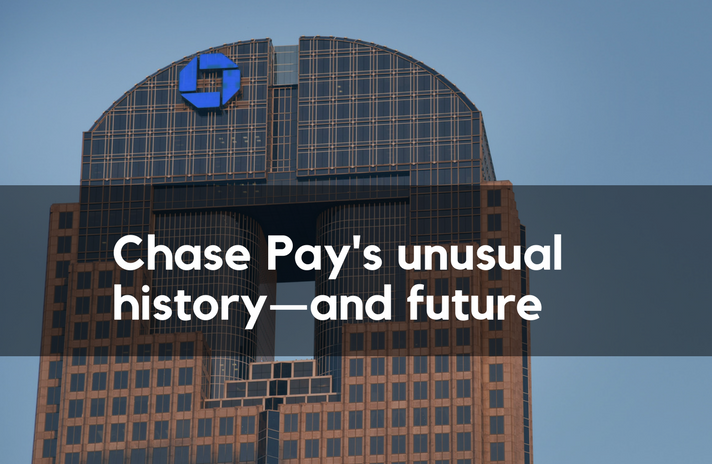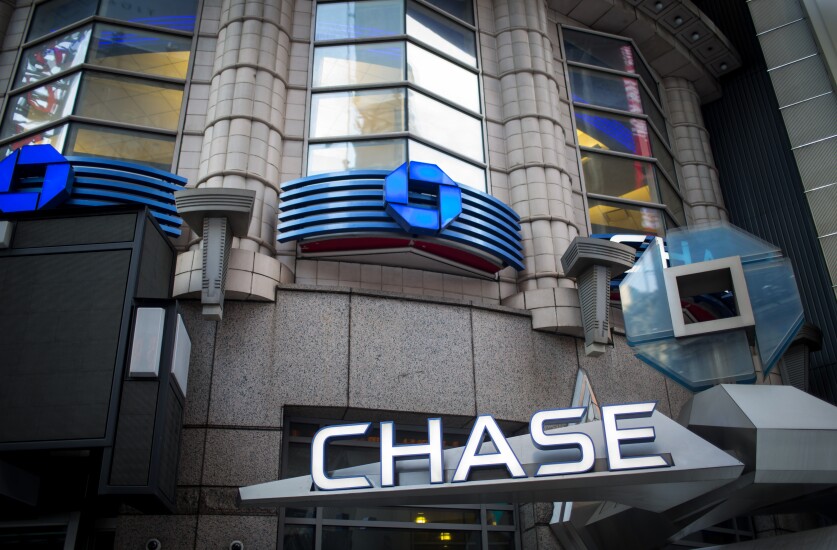

Chase Pay's big search for the elusive consumer element
Chase Pay in particular has a lot of friction at sign-up — its security mirrors that of JPMorgan Chase's mobile app, meaning consumers must remember their online banking password, agree to multiple End User License Agreements, and set up optional fingerprint authentication.
The whole process can seem futile if, in the end, it's not even clear where the wallet can be used. To address that, Chase has coordinated a group of 20 merchants to set up shop at a highly trafficked transit and shopping hub in New York called the Oculus. In the center of this environment, which the bank calls
"We had a vision of creating a space where our consumers can go and feel very comfortable trying this new form of payment," said Dina DeMerell, head of marketing for Chase Pay. "Mobile payments haven't really taken off yet in the U.S. and we think a big part of it is consumers are afraid to try it at a POS, so with the Oculus we wanted to create this safe place to try it."
The Oculus, which is located among the World Trade Center properties, will host Chase Pay Village until Jan. 7 with an emphasis on holiday wares such as toys, jewelry and chocolates. The merchants also accept standard payment instruments such as credit and debit cards, but each is equipped with a Chase-branded QR code reader.
Part of Chase Pay Village's mission is to determine which of its features — if any — are most compelling to shoppers.
"We are doing quite a bit of consumer research ... gathering intelligence about perceptions of the product because we are still very much in the early stages of rolling out Chase Pay," DeMerell said. "We are doing so much now in marketing, but we are trying to find out the magic of what it will take to get them to use Chase Pay."

Chase Pay's role as the new merchant mobile wallet
Chase Pay gives merchants the one prize they have fought tooth and nail to get: a mobile wallet that doesn't lock them into paying excess fees.
Chase's partner, MCX, is a joint venture of the country's biggest retailers, including Walmart and Target. MCX had worked for three years to develop a mobile wallet of its own, called
The Chase-MCX pact was also a concession on the part of the merchant venture, which once demanded exclusivity of its partners and has fought against sharing shopper payment data.
By mid-2016, Shell Oil agreed to
By signing up with Chase Pay at the same time CurrentC was shutting down, Shell set the pace for other merchants that may have felt abandoned by the fate of the CurrentC pilot.

A new role for ChaseNet
But everything that makes Chase Pay possible is built on the foundation of that platform, called
The bank describes ChaseNet as a simplification of the traditional five-party acquiring system, reduced to just three parties.
A traditional five-party system involves the consumer, the acquirer, the network, the issuer and the merchant. ChaseNet takes over the role of three of these participants, functioning as the acquirer, the network and the issuer.
This structure improves security and trims cost, allowing merchants to pay lower fees to accept payments.
Chase Pay does rely on one older piece of technology: QR codes, which are rapidly being replaced by Near Field Communication-based contactless payments. Apple Pay, Android Pay and Samsung Pay all support NFC as their primary payment option.

Chase Pay's big-box ally
The agreement builds on Chase's pact with the
In addition to what had become an obvious eventuality in Walmart bringing Chase Pay into its fold because of the processing deal, the two mobile payment apps operate on similar technology through the use of QR codes and scanners. That should make it easier for Walmart customers to initiate transactions through either app at the point of sale.

Chase Pay's $10 million bet on small merchants
Mobile payments startup LevelUp seemed to plateau after five years of trying to gain broader traction beyond its East Coast base, but Chase came to the rescue last fall when it announced it would integrate LevelUp into its fast-spreading Chase Pay app. The deal plays to LevelUp's strength with smaller merchants; Chase Pay had so far attracted primarily larger corporations like Starbucks and Shell Oil.
The user interface also turned out to be a key element. In the Chase Pay Village, the QR code readers supplied to merchants are identical to those used by LevelUp, except for the branding.
LevelUp also brings a more intriguing loyalty dimension to Chase Pay, with a well-established rewards program that drives business to local merchants. That value proposition is what’s been conspicuously absent from big third-party mobile wallets like Apple Pay and Android Pay.
Samsung Pay already recognized the loyalty gap in its wallet and introduced a

A new strategy for innovation
The biggest innovators in payments aren't necessarily banks, and that's a problem for Chase, which has such a large client base that every startup sees it as a target.
While banks took a back seat, technology companies like Stripe and PayPal's Braintree swept in to work with the most ambitious upstarts, including Lyft (
"You have Square, Stripe and Braintree in this market," said Rich Aberman, co-founder and chief strategy officer of WePay, which Chase is acquiring. As part of Chase, "we can now say we are the API layer to [4 million] small businesses. That's transformative," he said.
The bank's earlier investments have paid off in unexpected ways. For example, the key to Chase Pay — and perhaps, to everything about Chase's transformation — is its scale.
Chase Pay provides the most benefits as a closed-loop network, when both the merchant and consumer are Chase clients. Chase's plans for WePay have to be just as ambitious, with the bank's 4 million small to medium sized business clients at stake.
"We see more business owners that want to have the payments integrated with the software that runs their businesses. We want to be in position to take advantage of that," said Rob Cameron, Chase's head of partnerships for North America and president of Canada for Merchant Services.
With its size, Chase can make deals quickly, whether it's acquiring
"When you add Chase Pay to all of this technology, a business can allow people to pay with points at a small business through a mobile app, the same way they do at Starbucks," Cameron said.





